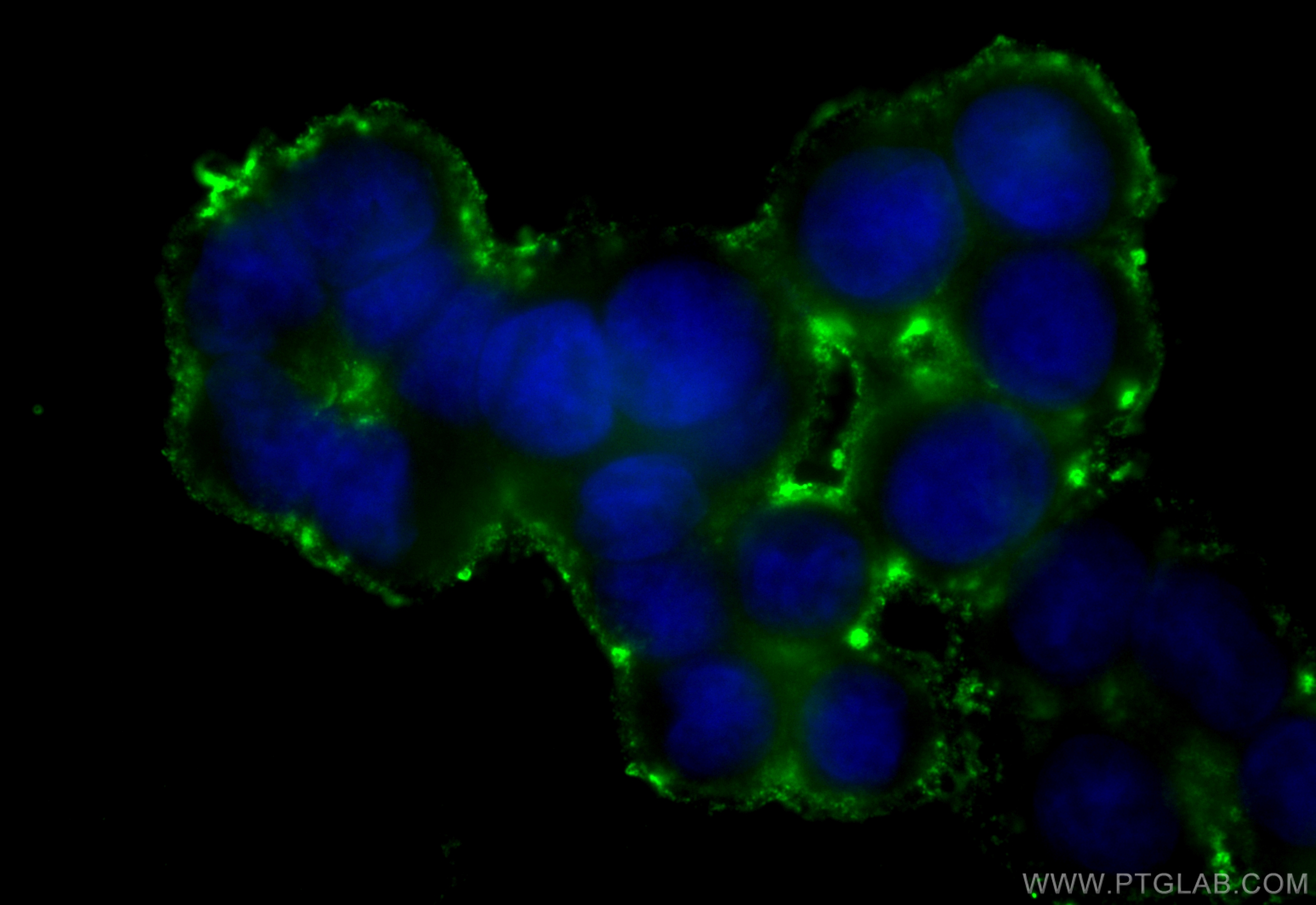验证数据展示
经过测试的应用
| Positive IF/ICC detected in | HT-29 cells |
推荐稀释比
| 应用 | 推荐稀释比 |
|---|---|
| Immunofluorescence (IF)/ICC | IF/ICC : 1:50-1:500 |
| It is recommended that this reagent should be titrated in each testing system to obtain optimal results. | |
| Sample-dependent, Check data in validation data gallery. | |
产品信息
CL488-68287 targets SERCA3 in IF/ICC applications and shows reactivity with human, mouse, rat samples.
| 经测试应用 | IF/ICC Application Description |
| 经测试反应性 | human, mouse, rat |
| 免疫原 | SERCA3 fusion protein Ag4527 种属同源性预测 |
| 宿主/亚型 | Mouse / IgG1 |
| 抗体类别 | Monoclonal |
| 产品类型 | Antibody |
| 全称 | ATPase, Ca++ transporting, ubiquitous |
| 别名 | ATP2A3, 1A2C2, ATP2A 3, EC:7.2.2.10, SR Ca(2+)-ATPase 3 |
| 计算分子量 | 1043 aa, 114 kDa |
| 观测分子量 | 97-110 kDa |
| GenBank蛋白编号 | BC035729 |
| 基因名称 | SERCA3 |
| Gene ID (NCBI) | 489 |
| RRID | AB_3672989 |
| 偶联类型 | CoraLite® Plus 488 Fluorescent Dye |
| 最大激发/发射波长 | 493 nm / 522 nm |
| 形式 | Liquid |
| 纯化方式 | Protein G purification |
| UNIPROT ID | Q93084 |
| 储存缓冲液 | PBS with 50% glycerol, 0.05% Proclin300, 0.5% BSA, pH 7.3. |
| 储存条件 | Store at -20°C. Avoid exposure to light. Stable for one year after shipment. Aliquoting is unnecessary for -20oC storage. |
背景介绍
The SERCA, which pumps cytosolic Ca2+ into the ER, is an imperative maintainer of ER Ca2+ homeostasis. The mammalian SERCA family is comprised of three tissue-specific members, SERCA1-3. SERCA3 is present in endothelial and epithelial cells of various tissues. SERCA3 helps regulate intracellular Ca2+, which is critical for maintaining normal INS secretion and is closely linked to metabolism, neuronal plasticity, gene transcription, cell growth, differentiation, apoptosis, protein folding and carcinogenesis. Several isoforms of SERCA3 exist due to the alternative splicing.
实验方案
| Product Specific Protocols | |
|---|---|
| IF protocol for CL Plus 488 SERCA3 antibody CL488-68287 | Download protocol |
| Standard Protocols | |
|---|---|
| Click here to view our Standard Protocols |
